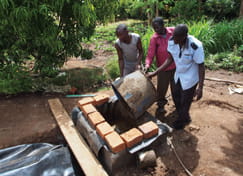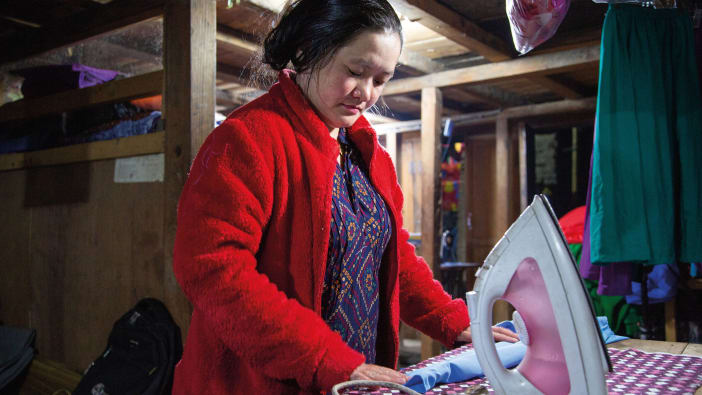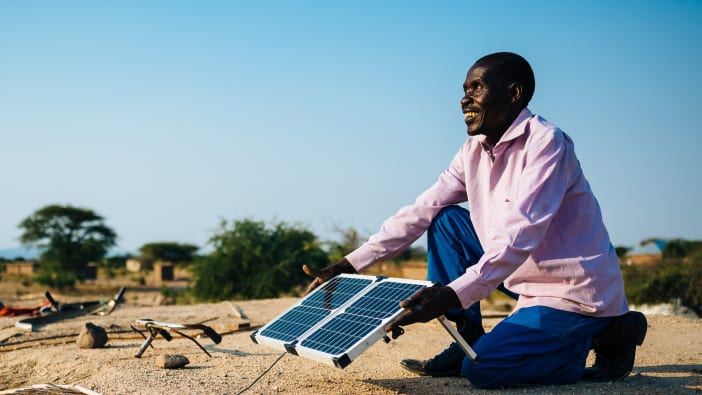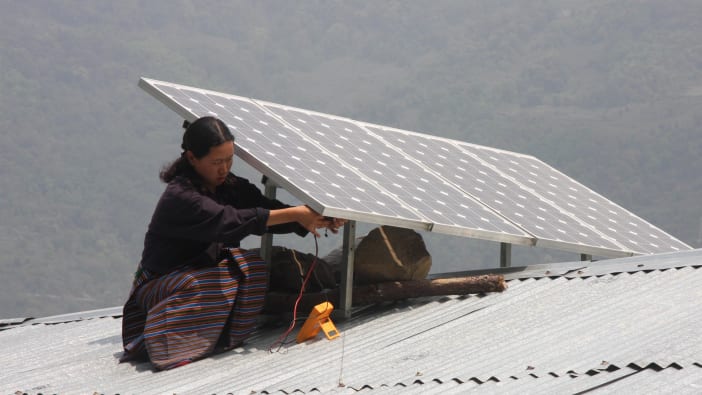Nearly 1.5 billion people around the world do not have access to electricity, particularly in rural areas. They depend on kerosene lamps and candles, which are often expensive and provide poor lighting.
Around 3 billion people depend on wood and wood products for cooking. Wood smoke exposes people to fumes that can damage their health. In many areas, wood supplies are very scarce and this leads to people cutting down trees in areas around towns and cities.
However, renewable energy can provide alternative sources of light and fuel. Renewable energy uses sources such as wind, water power and sunshine. Because this energy does not come from fossil fuels, it does not contribute to climate change (except through the production of wind and water turbines and solar panels). Renewable energy can be regarded as the power of the future. Donors may be willing to consider funding requests for renewable energy sources. Many clinics and schools have benefited from grants to install PV panels (see ‘Solar electricity’ box) to run fridges and provide lighting. Below are three examples of different renewable energy sources. Could you use any of these in your location?
Solar electricity

In Larcay, Peru, LUTW helped an isolated community to connect 20 homes with PV systems.
There are two main forms of solar energy:
- solar collectors, which use the sun’s energy to warm water
- photovoltaic panels (PV panels), which use the sun’s light to produce electricity.
Light up the World (LUTW) is a not-for-profit organisation based in Canada and Peru. Its workers have seen the way access to energy changes lives. LUTW trains local technicians to install PV panels and helps local organisations to provide solar energy effectively. They help empower communities to move towards a more sustainable future.
If solar PV systems are designed well, they do not need many materials, are easy to maintain and have minimal environmental impact. They do not need to be connected to the national electricity grid, so they are ideal in remote locations. The LUTW systems include a battery to store power for use at night when the sun is no longer shining. The PV system provides electric lights and has an adaptor to connect other devices such as cell phones and radios.
LUTW trains community members, giving them practical skills to install, maintain and repair renewable energy systems. This gives communities the independence to manage systems in their villages in the longer term.
When people value something and feel a sense of ownership, they are more likely to treat it with care. For this reason, LUTW does not donate systems to families. Instead communities contribute financially, provide accommodation for technical staff, attend planning meetings and supply local materials.
LUTW offers various training courses to teach people how to design, install and maintain small PV systems.
For more information please contact LUTW.
Email: [email protected]
Website: www.lutw.org
Renewable electricity in rural Afghanistan
Electricity is rare in rural Afghanistan. The central government and local authorities do not have systems in place to supply electricity to rural areas.
A Tearfund partner is working in a north-eastern province in Afghanistan. It is one of the poorest and least accessible areas of the country, though it is very beautiful. The rough roads are often impossible to travel on, and sometimes flooding washes away bridges. Working with community members, Tearfund’s partner has installed 325 micro-hydro power plants over many years. Micro-hydro plants generate electricity from flowing water.
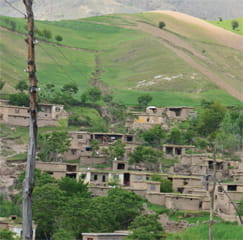
Tearfund's partner has installed 325 micro-hydro plants in rural Afghanistan.
One of these micro-hydro plants is in Sher Jan’s* community. He is the cheerful village elder and head teacher of the local school of 900 children. When asked what difference the new micro-hydro power plant and electricity supply had made to his community, he replied, ‘Before, we were in darkness. Now we have light, just like Tajikistan!’
Previously, people had used bad-smelling oil lamps, costing each household around £60 a year. Now the electric lighting is highly valued by women for cooking in the evening and for sewing. Children have light for doing their homework after dark. People can work longer. And everyone appreciates electricity for watching TV and keeping up with world news.
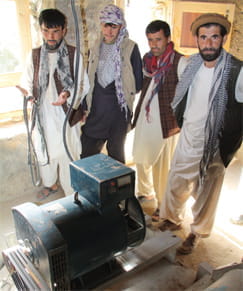
Working together on micro-hydro power projects has helped to unite communities.
In addition, the process of agreeing and installing a micro-hydro plant helps unite the community. Before the Tearfund partner agrees to help install a power plant, all the households in the community have to confirm that they want this. They have to contribute an amount of money that has been agreed between them and the Tearfund partner. They also help to transport the turbine and other parts to their village, normally by donkey because of the lack of roads. A village committee must be appointed and trained to take responsibility for ongoing maintenance of the power plant after installation.
Bruce Clark, Tearfund’s Afghanistan Country Representative
*Name changed




